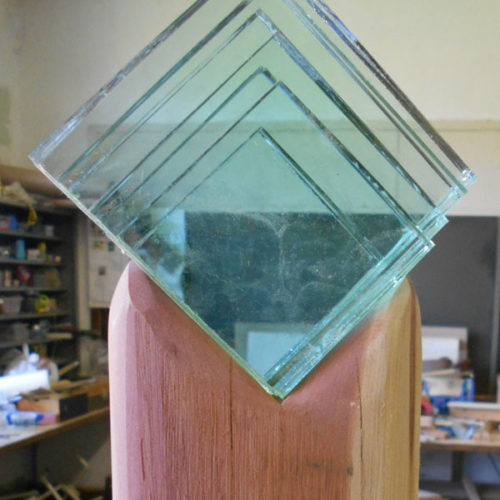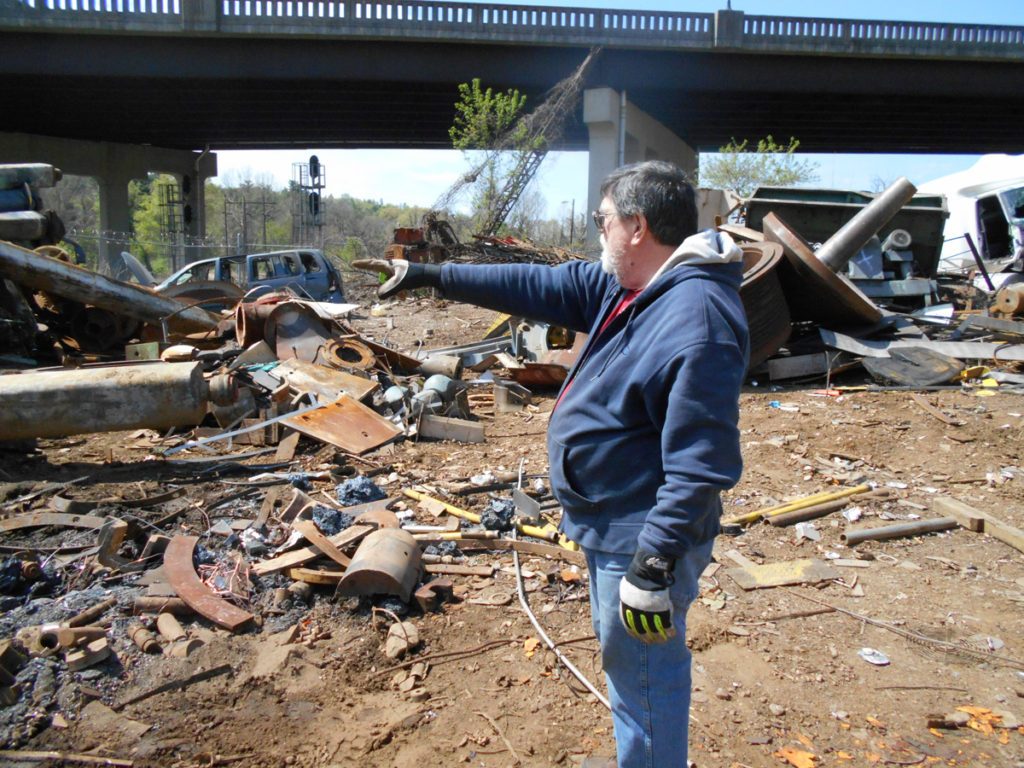 Now that it has bloomed and become a “sculpture”, it’s time we named this puppy.
Now that it has bloomed and become a “sculpture”, it’s time we named this puppy.
Amaranth
- an imaginary, undying flower.
- any plant of the genus Amaranthus, some species of which are cultivated as food and some for their showy flower clusters or foliage.
- the grain of certain Amaranthus species, used for food and noted as an important staple grain of the Aztecs.
So, you create a sculpture. How does it sit on the ground? Because it has to sit on the ground. Gravity you know. We discussed a lot of possibilities. A well defined “stand”. Legs like roots (yuck). Four pegs in the ground. The curved legs we settled on complimented the curved structure of the upper arcs.
Who would have thought it was so hard to photograph a sculpture? Not me!
Still final finishing, assembly, and painting. We will get a better photograph.
 This project was supported by the North Carolina Arts Council, a division of the Department of Natural and Cultural Resources.
This project was supported by the North Carolina Arts Council, a division of the Department of Natural and Cultural Resources.





























 This project was supported by the North Carolina Arts Council, a division of the Department of Natural and Cultural Resources.
This project was supported by the North Carolina Arts Council, a division of the Department of Natural and Cultural Resources.

 Here is the whole sculpture put together and photographed. It was a bear to move. I tried to make it so it would break into 2 or three parts. The bolts and nuts will come out but the pieces wouldn’t separate. So, I am going to remove the connectors and weld it back into one piece. It still needs a protective coat of paint on the rebar. The stainless steel leaves should be OK in the weather. We learned a great deal. A bobcat (you know the one you use to lift things not the one that bites you in the ass) is on our wish list because, damn!
Here is the whole sculpture put together and photographed. It was a bear to move. I tried to make it so it would break into 2 or three parts. The bolts and nuts will come out but the pieces wouldn’t separate. So, I am going to remove the connectors and weld it back into one piece. It still needs a protective coat of paint on the rebar. The stainless steel leaves should be OK in the weather. We learned a great deal. A bobcat (you know the one you use to lift things not the one that bites you in the ass) is on our wish list because, damn! Now that it has bloomed and become a “sculpture”, it’s time we named this puppy.
Now that it has bloomed and become a “sculpture”, it’s time we named this puppy.
 Today was a good day. We took a drive and saw some new scenery and one traffic jam. Way cool traffic jam. Worked this afternoon and made progress and changes on the pod and stalk. The large leaves are now stainless steel not rusty tin roofing. The pod is shorter and wider. The cedar has two coats of spar varnish. It is now waterproof and very red. The stem is 1/2” rebar rather than 3/4”. The 3/4” seem out of proportion so 1/2” instead.
Today was a good day. We took a drive and saw some new scenery and one traffic jam. Way cool traffic jam. Worked this afternoon and made progress and changes on the pod and stalk. The large leaves are now stainless steel not rusty tin roofing. The pod is shorter and wider. The cedar has two coats of spar varnish. It is now waterproof and very red. The stem is 1/2” rebar rather than 3/4”. The 3/4” seem out of proportion so 1/2” instead.

 This is the initial shaped pod. It will be on a steel stalk extending from the leaves upward. I have since covered it with several coats of spar (very high gloss exterior grade) polyurethane. This has given it a deep reddish color. The stacked glass bloom sits at the top of the pod. The stalk will be made from 3/4” rebar.
This is the initial shaped pod. It will be on a steel stalk extending from the leaves upward. I have since covered it with several coats of spar (very high gloss exterior grade) polyurethane. This has given it a deep reddish color. The stacked glass bloom sits at the top of the pod. The stalk will be made from 3/4” rebar. I have the upright overlapping circle that I began with. It will not be used in this sculpture. I had it propped up for welding and like the way it looked. So, when I finish the present piece, I think I just might start right in on a new sculpture, Single Helix. I may “skin” this one in either steel or stainless steel so that you don’t see the framework.
I have the upright overlapping circle that I began with. It will not be used in this sculpture. I had it propped up for welding and like the way it looked. So, when I finish the present piece, I think I just might start right in on a new sculpture, Single Helix. I may “skin” this one in either steel or stainless steel so that you don’t see the framework. This morning (after our 2nd Covid19 vaccine shot) Susan and I took a trip to Biltmore Metal Recycling looking for steel and inspiration. You can never tell what you will find. We found some really cool things that were way bigger than we could move. Oh well.
This morning (after our 2nd Covid19 vaccine shot) Susan and I took a trip to Biltmore Metal Recycling looking for steel and inspiration. You can never tell what you will find. We found some really cool things that were way bigger than we could move. Oh well.